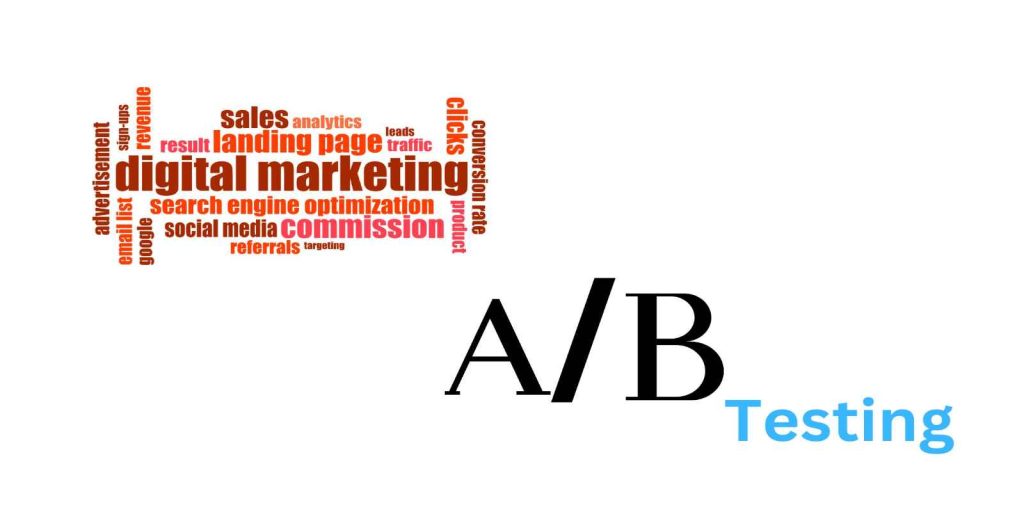A/B testing, also known as split testing, is a method used in digital marketing to compare two versions of a webpage, email, ad, or other digital assets to determine which one performs better. By testing different elements, businesses can make data-driven decisions to optimize their marketing strategies and improve conversion rates.
Key Purposes of A/B Testing in Digital Marketing
- Improve Conversion Rates
Test variations of calls-to-action, headlines, or layouts to identify what resonates best with the audience. - Enhance User Experience
Ensure that the design, navigation, and content layout meet user expectations and preferences. - Optimize Content Performance
Experiment with content formats, messaging, or visuals to improve engagement and retention. - Reduce Bounce Rates
Identify factors causing users to leave your website and implement solutions to keep them engaged. - Increase ROI
Focus resources on high-performing strategies, ensuring better returns on marketing investments.
Steps to Conduct A/B Testing
- Identify a Goal: Determine the specific metric to improve (e.g., click-through rates, form submissions).
- Create Variations: Develop two or more versions of the element to be tested.
- Split Traffic: Use tools to divide your audience randomly between the variations.
- Analyze Results: Compare performance data to identify the best-performing version.
- Implement Changes: Apply the winning variation to improve overall marketing outcomes.
Examples of A/B Testing in Digital Marketing
Here are practical examples of how A/B testing is used across different aspects of digital marketing:
1. Call-to-Action (CTA) Optimization
- Test:
- Version A: “Buy Now” button in red.
- Version B: “Buy Now” button in blue.
- Purpose: Determine which button color leads to more clicks and purchases.
- Outcome: Red CTA button increased clicks by 20%.
2. Email Marketing Subject Lines
- Test:
- Version A: “Hurry! Sale Ends Tonight!”
- Version B: “Save Big – 50% Off Today Only!”
- Purpose: Find the subject line that generates higher email open rates.
- Outcome: Version B improved open rates by 15%.
Also Read: How To Create A Business Email
3. Landing Page Layout
- Test:
- Version A: A landing page with a video.
- Version B: A landing page with an image and text.
- Purpose: Identify which layout leads to more form submissions.
- Outcome: Version A (with video) increased conversions by 30%.
4. Ad Copy Testin
- Test:
- Version A: Ad copy emphasizing “Fast Delivery.”
- Version B: Ad copy highlighting “Lowest Prices.”
- Purpose: Evaluate which messaging resonates better with the audience.
- Outcome: “Fast Delivery” ad copy generated 25% more clicks.
5. Pricing Page Design
- Test:
- Version A: Pricing in a list format.
- Version B: Pricing displayed in a comparison table.
- Purpose: Determine which format makes pricing easier to understand, encouraging purchases.
- Outcome: Comparison table increased sign-ups by 10%.
6. Product Images
- Test:
- Version A: Product photo on a plain white background.
- Version B: Product photo in a lifestyle setting.
- Purpose: Understand which type of image drives more purchases.
- Outcome: Lifestyle images led to a 12% increase in conversions.
| Element Tested | Variations | Goal |
|---|---|---|
| Call-to-Action Button | Different colors or text | Increase click-through rates |
| Email Subject Lines | Catchy vs. formal tone | Boost open rates |
| Landing Page Design | Minimalistic vs. detailed layout | Reduce bounce rates |
| Ad Copy | Emotional vs. factual language | Improve ad conversions |
Also Read: What is a Full Stack Marketer?
Conclusion
A/B testing is a critical tool in digital marketing that empowers businesses to understand their audience better and optimize their campaigns effectively. By testing and iterating, marketers can achieve higher engagement, conversions, and ROI, all while delivering a superior user experience.

